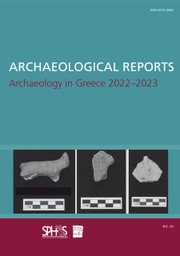No CrossRef data available.
Article contents
Religion and Culture in Late Antique Greece
Published online by Cambridge University Press: 19 November 2013
Extract
For much of the 20th century, the focus of Late Antique studies in Greece was on the excavation of churches. This resulted in a vast body of essential material contributing to an understanding of the period. The exceptional excavation work of archaeologists such as Anastasios Orlandos, Dimitrios Pallas, Georgios Soteriou and Ioannis Stampoltzis among others has provided scholars with a huge body of church data. However, data for analysing Late Antique settlements, industries and trade has not been as extensive. This has resulted in a near total reliance on the churches and historical sources such as Libanius, Zosimus, Procopius, Eusebius and Theophanes for an understanding of Late Antique Greece. There is some useful textual material, such as references to territory and diocese, as discussed in Hierokles' Sixth Synekdemos and the Acts of the Ecumenical Councils, as well as, of course, the Theodosian Code. The increasing amount of secular data resulting from rescue and research excavations and survey has made a significant contribution to redressing the outdated view of the Late Antique period as one of decline. In some respects this view was perpetuated by the fact that it is caught between the high points of the Roman Imperial and Byzantine periods. The underlying context was, therefore, seen rather in terms of decline (particularly urban) and less in terms of the birth of significant artistic and social endeavours.
The Late Antique period for the purposes of this chapter will be taken to run from the mid fourth century AD (the foundation of Constantinople) to the creation of the thema of the Helladikon between AD 687 and 695.
- Type
- Archaeology in Greece 2012–2013
- Information
- Copyright
- Copyright © Authors, the Society for the Promotion of Hellenic Studies and the British School at Athens 2013




